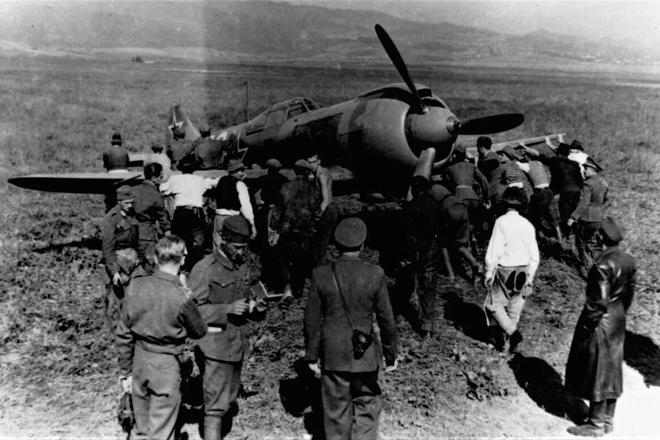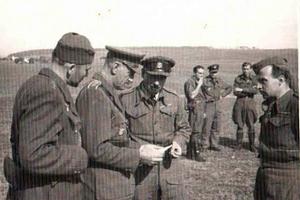Eighty years ago, the First Czechoslovak Fighter Regiment, equipped with Soviet-made Lavochkin La-5FN aircraft, landed at a makeshift airfield near the village of Zolná, now part of Zvolen.
It wasn’t just the Tri Duby airfield in Sliač that saw intense activity during the Slovak National Uprising (SNP); Zolná, though quieter, played a crucial strategic role in resisting enemy forces.
A helping hand in the heart of Europe offers a travel guide of Slovakia.
A monument now stands in Zolná, commemorating the airfield that operated there in September and October 1944. It was here that fighter planes from the First Czechoslovak Independent Fighter Regiment landed, a base that enemy forces never succeeded in locating or capturing.
The regiment was formed in the Soviet Union at the end of 1943, bolstered mainly by pilots from the Royal Air Force.
Each year, September 17 is celebrated as Slovak Aviation Day. This year marks 80 years since the regiment neutralised dozens of enemy targets, both in the air and on the ground.
The fighting did not stop
“These Czechoslovak pilots had already endured intense combat in Poland, France, and England, serving in the 310th, 312th, and 313th bomber squadrons, as well as the 311th fighter squadron, where they were quite popular,” noted Emil Šimončík, a local history enthusiast and author.
He explained that, due to a shortage of pilots in Russia, an agreement was reached, and on February 1, 1944, the first fighter squadron for Russia was established in England to serve within the Czechoslovak army, commanded by Captain František Fajtl.
“The pilots travelled by ship, train, bus, and plane to Ivanovo, northeast of Moscow, where they trained on Soviet LA-5FN fighters. The order to form the First Czechoslovak Fighter Regiment was issued on June 1, and by July, they were advancing closer to the front, initially under the Second Air Army and later the Eighth Air Army,” Šimončík added.
The organisers of the Slovak National Uprising also anticipated air support from their allies. Upon learning of the uprising, the pilots requested to be transferred to the liberated territories as soon as possible.
A new strategy
“Following reconnaissance in central Slovakia, the regiment flew from Stubno to the rebel territory on September 17 in two groups. It was decided that the regiment would not operate from the well-known Tri Duby airfield, which the Luftwaffe was already familiar with and frequently bombed, but rather from the airfield in Zolná. Twenty-one aircraft arrived, while the remaining personnel were transported by transport planes. The pilots were accommodated in the Grand and Centrál hotels in Zvolen,” explained the writer.
The arrival drew attention, particularly from locals who cared for the pilots and soldiers as if they were their own. On the day of their arrival, the Czechoslovak flag flew at the makeshift airfield and remained there until the regiment departed from the rebel territory.
“By the very next day, the regiment conducted its first combat mission, with eight La-5FN fighters attacking the airfield in Piešťany, where they destroyed and damaged several enemy aircraft and rendered the airfield’s facilities inoperative. The following days were filled with active aerial operations in the Vrútky, Prievidza, and Veľké Pole areas, supporting the rebel units in their defensive struggle. The pilots also engaged in several aerial dogfights,” he clarified.
Six weeks in Zolná
October 18 was exceptionally busy, with the regiment’s pilots engaged in fierce battles against a significant group of Luftwaffe aircraft. The entries in the war diary were numerous, documenting not only successes but also losses.
After October 20, the regiment began preparations to leave Slovakia due to the general offensive by Nazi forces. “Adverse weather conditions, including rain and muddy terrain, made air operations impossible. The flight over the front occurred on October 25. Some members remained in Slovakia to continue the fight in the mountains,” Šimončík explained.
The contribution of the First Czechoslovak Fighter Aviation Regiment to the insurgent battles was indisputable. On October 28, 1944, the regiment was awarded the honorary title of ‘Zvolenský’ and continued to participate in combat until the end of the war.
“The efforts of the residents of Zolná were also recognised. The rebel village was honoured for its extraordinary resistance activities and support for the SNP with the Order of the Red Star. Much water has flowed through the Hučava stream, near which the La-5FN fighters of the First Czechoslovak Independent Fighter Regiment were stationed in late summer and early autumn of 1944,” he added.
These dramatic moments are forever etched in history, marking this day as Slovak Aviation Day.
©My Zvolen


 A monument now stands in Zolná, commemorating the airfield that operated there in September and October 1944. (source: Archive of E. Šimončík)
A monument now stands in Zolná, commemorating the airfield that operated there in September and October 1944. (source: Archive of E. Šimončík)


